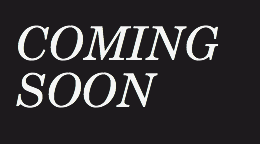A Mosaic of Mosaics
From Londonhua WIKI
A Mosaic of Mosaics
Contents
Abstract
The paragraph should give a three to five sentence abstract about your entire London HUA experience including 1) a summary of the aims of your project, 2) your prior experience with humanities and arts courses and disciplines, and 3) your major takeaways from the experience. This can and should be very similar to the paragraph you use to summarize this milestone on your Profile Page. It should contain your main Objective, so be sure to clearly state a one-sentence statement that summarizes your main objective for this milestone such as "a comparison of the text of Medieval English choral music to that of the Baroque" or it may be a question such as "to what extent did religion influence Christopher Wren's sense of design?"
Introduction
I suggest you save this section for last. Describe the essence of this project. Cover what the project is and who cares in the first two sentences. Then cover what others have done like it, how your project is different. Discuss the extent to which your strategy for completing this project was new to you, or an extension of previous HUA experiences.
As you continue to think about your project milestones, reread the "Goals" narrative on defining project milestones from the HU2900 syllabus. Remember: the idea is to have equip your milestone with a really solid background and then some sort of "thing that you do". You'll need to add in some narrative to describe why you did the "thing that you did", which you'd probably want to do anyway. You can make it easy for your advisors to give you a high grade by ensuring that your project milestone work reflects careful, considerate, and comprehensive thought and effort in terms of your background review, and insightful, cumulative, and methodical approaches toward the creative components of your project milestone deliverables.
Section 1: Background
Now you're on your own! Your milestone must include a thorough and detailed background section with detailed subsections; if additional articles are required to be referenced in this background section, create those as well and link to them (the creation of all pages is tracked by the wiki site and attributed to your username). Remember to use rich multimedia whenever possible. Consult the Help page as needed! Remember, if you don't see an article on this site that is an integral part of your project, create it! Your entire page-creating/page-editing history factors into your overall grade.
A Brief History
Mosaics are created on a form known as opus sectile, a term that refers to, "the revetment of both walls and floors with pieces of marble or other materials cut to the specific shapes of a design, and fitted together to form a smooth surface."[1] No one truly knows the origins of mosaics, but they are believed to have originated from ancient Sumeria and Assyria in the 9th century BC. [2] From these places the art form spread across the Mediterranean sea, taking hold of Greece first, then to the Roman Empire.
Pebble
This early technique was used in 7th century BC Greece originally as just another form of pavement. Comprised of small smooth pebbles set into clay or plaster, these basic elements allowed for wealthy persons and institutions to display their wealth.[3] The original pebble mosaics lacked a wide variety of colors
Tesserae
Major Styles
Hellenistic
Christian
Jewish
Middle Eastern and Western Asia
Techniques
Direct
Indirect
Double Indirect
Section 2: Deliverable
In this section, provide your contribution, creative element, assessment, or observation with regard to your background research. This could be a new derivative work based on previous research, or some parallel to other events. In this section, describe the relationship between your background review and your deliverable; make the connection between the two clear.
A Modern Mosaic

Here will be my created mosaic and a gallery of the images I used to create the mosaic.
About the Mosaic
This will describe the style of the mosaic that I have created and how I have used modern techniques and technology to emulate the creation of mosaics.
Conclusion
In this section, provide a summary or recap of your work, as well as potential areas of further inquiry (for yourself, future students, or other researchers).
References
- Dunbabin, K. (2012). Mosaics of the Greek and Roman world (1st ed.). New York: Cambridge University Press.
- Ling, R. (1998). Ancient mosaics (1st ed.). Princeton, NJ: Princeton University Press.
- Rule, M. (1974). Floor mosaics in Roman Britain (1st ed.). London: Macmillan.
- Witts, P. (2010). Mosaics in Roman Britain (1st ed.). Stroud, Gloucestershire: The History Press.
External Links
If appropriate, add an external links section
Image Gallery
If appropriate, add an image gallery
